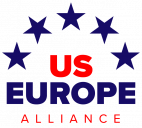“International investment, both by American companies abroad and by foreign companies in the United States, benefits U.S. companies and American workers by creating high-paying jobs, boosting exports, and spurring innovation in the United States.”
The mutual benefits of the integrated transatlantic economy arise from investment as well as trade. The U.S. and the EU economic bloc remain each other’s primary source and destination for foreign direct investment. By 2022, U.S. investment in Europe had increased to over €3.7 trillion, while European investment in the U.S. reached more than $2 trillion, with mutual investment stock now estimated at $7.4 trillion in 2025. To put this in perspective, U.S. investment in the Asia-Pacific region, the second-highest regional destination, is significantly lower, and EU investment in China is only around $20 billion—roughly 1% of its investment in the U.S. Moreover, U.S. business continues to invest in non-EU states; for example, investment in Turkey has grown modestly since 2017, though specific figures for 2025 are not readily available.
While these figures are substantial, their true significance lies in their impact—particularly on American employment. European enterprises accounted for 4.9 million jobs in the U.S. by 2022, a number likely higher in 2025 given the continued strength of our economic ties. Transatlantic foreign investment further drives U.S.-Europe trade in goods, with related-party trade remaining a key component of U.S. goods exports to the EU. In 2024, EU-U.S. trade in goods alone was worth €865 billion, and total trade in goods and services reached €1.6 trillion in 2023, highlighting the enduring economic integration that supports jobs and wages for the American workforce.
The reasons for these enormous levels of foreign investment between the U.S. and Europe remain rooted in shared strengths, though challenges have emerged. Fundamentally, physical security is guaranteed throughout much of Europe due to the reliability and effectiveness of the NATO Alliance, despite recent strains in U.S.-NATO relations under the Trump administration, which have raised concerns about the U.S. security guarantee. Just as critical is the commitment to the rule of law by our European trading partners, undergirded by a shared respect for accountability, transparency, and fair dealing—values that continue to foster confidence in cross-border investment. However, the transatlantic economic relationship faces new hurdles in 2025, including trade disputes and the Trump administration’s “America First” policies, which have introduced tariffs and reduced incentives for investment in the EU while encouraging relocation to the U.S. The U.S. now leads Europe on investor metrics like capital availability and innovation rewards, potentially shifting investment dynamics. Despite these tensions, the transatlantic economy remains the most stable and mutually beneficial commercial relationship globally, with both sides reassessing economic dependencies amid geopolitical shifts like Russia’s war in Ukraine and competition with China. Our common values and military cooperation continue to give people on both sides of the Atlantic the confidence to innovate, work hard, and invest, though a more coordinated approach to trade and investment policies will be crucial to sustaining this partnership.
